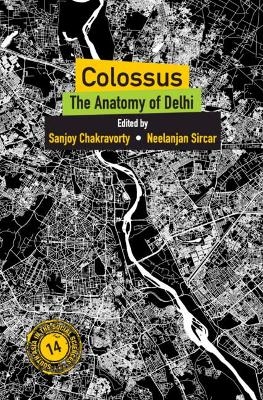
Colossus
Cambridge University Press (Verlag)
978-1-108-83224-3 (ISBN)
The National Capital Region of Delhi is a diverse and unequal space. Its more than 30 million people are sharply differentiated by economic class, religion and caste, education, language, and migration status. Its 45,000 square kilometres is a tapestry of spaces - ghettoes, slums, enclaves, institutional areas, planned and unplanned and authorized and unauthorized colonies, forests and agricultural fields. In some ways it is a dynamic society aspiring to global city grandeur; in other ways it is a bastion of tradition, sectarianism and hierarchy. Colossus details these realities and paradoxes under three themes: social change, community and state, and inequality. From the material condition of the metropolis - its housing, services, crime and pollution - to its social organization - of who marries whom, who eats with whom, and who votes for whom - this book unpacks the complex reality of a metropolitan region that is emblematic of India's aspirations and contradictions.
Sanjoy Chakravorty is Professor of Geography and Urban Studies and Global Studies at Temple University. He has written books on epistemology (The Truth About Us), inequality (Fragments of Inequality), land (The Price of Land), industrialization (Made in India), and the Indian diaspora in the US (The Other One Percent). Neelanjan Sircar is Assistant Professor of Political Science at Ashoka University and a Senior Visiting Fellow at the Centre for Policy Research, Delhi. He writes on the political economy of India (with a focus on elections), comparative political behaviour, and Bayesian methods.
Introduction Sanjoy Chakravorty; Part I. State of the Metropolis: Overview: 1. Geography and demography: Mapping the metropolis Shrobona Karkun; 2. Assets and spatial inequality Neelanjan Sircar; 3. Housing and settlements: Invisible planning, visible exclusions Patrick Heller, Partha Mukhopadhyay, Shahana Sheikh and Subhadra Banda; 4. Services: Spatial inequality of basic infrastructure Shamindra Nath Roy; 5 Migration: Persisting inequalities and spatial disadvantage Khushdeep Kaur Malhotra; 6. Energy: electrifying the capital Radhika Khosla; 7. Crime: Victimization in New Delhi – Insights from new data Milan Vaishnav and Matthew Lillehaugen; Part II. Social and Political Change: Overview: 8. Religion, caste, class, politics: How urbanization affects social interactions and political behaviors Sumitra Badrinathan and Devesh Kapur; 9. Marriage: When, to whom, and how people get married Megan N. Reed; 10. Education: Understanding the gender gap in education and employment Deepaboli Chatterjee, Babu Lal, and Rimjhim Saxena; 11. Spatial politics: Sociality, transparency and ideas of community in Delhi and Gurgaon Sanjay Srivastava; 12. Politicians and netas: The politics of grievance and political intermediation Neelanjan Sircar; 13. Political parties: The emergence of the Aam Aadmi Party and the changing contours of the party system Adnan Farooqui; 14. Pollution: Vitiated air and thinking about Delhi's environment Awadhendra Sharan; Statistical Appendix; Index.
| Erscheinungsdatum | 04.02.2022 |
|---|---|
| Reihe/Serie | South Asia in the Social Sciences |
| Zusatzinfo | Worked examples or Exercises |
| Verlagsort | Cambridge |
| Sprache | englisch |
| Maße | 158 x 235 mm |
| Gewicht | 660 g |
| Themenwelt | Naturwissenschaften ► Geowissenschaften ► Geografie / Kartografie |
| Sozialwissenschaften ► Soziologie | |
| Wirtschaft ► Volkswirtschaftslehre ► Wirtschaftspolitik | |
| ISBN-10 | 1-108-83224-5 / 1108832245 |
| ISBN-13 | 978-1-108-83224-3 / 9781108832243 |
| Zustand | Neuware |
| Haben Sie eine Frage zum Produkt? |
aus dem Bereich


